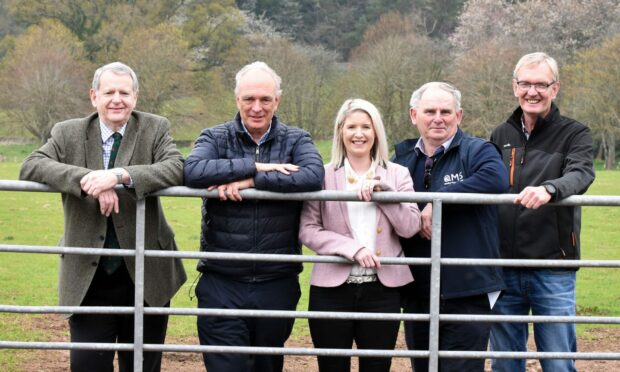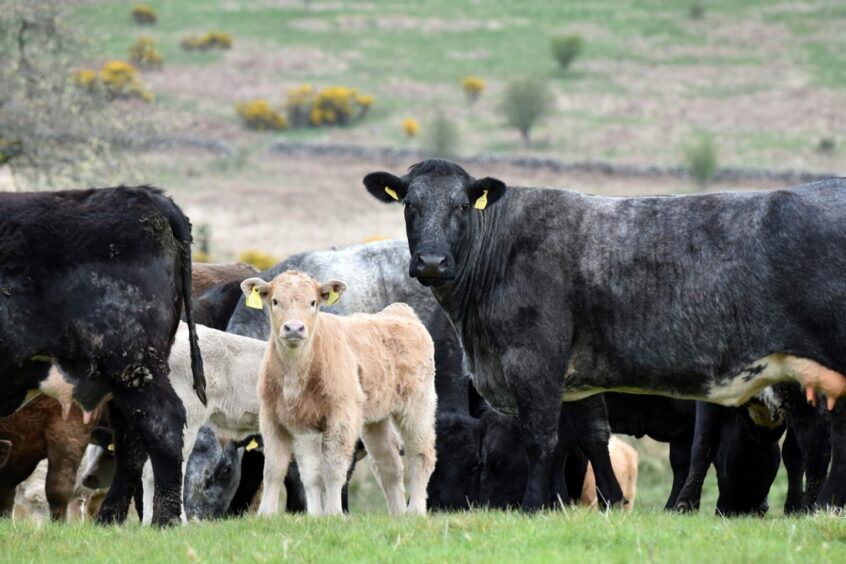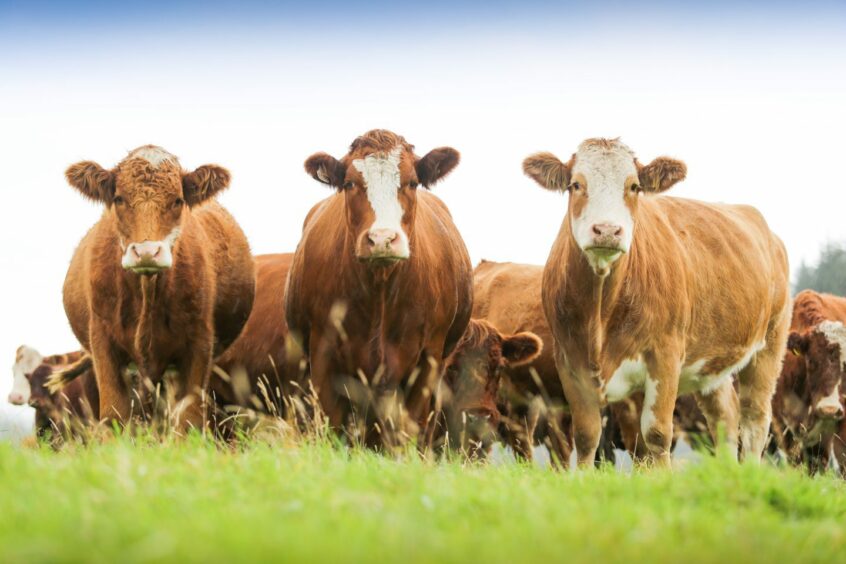With less than a month to go until Scotland’s Beef Event, hosted by the Scottish Beef Association at Dalswinton Estate, Dumfries, courtesy of Peter Landale, plans are rapidly coming together before the team at Dalswinton open their gates on Tuesday 6 June.
Thousands of attendees will be able to see the Dalswinton beef enterprise first hand as well listen in to a series of highly informative seminars featuring key industry spokespersons.
A number of demonstrations will be taking place throughout the day as well as a speaker’s corner with many cattle breed society representatives.
Event chairman, Scott Henderson, said: “We first approached Peter back in 2020 and are delighted that he’s stuck with us in his offer to host Scotland’s Beef Event.
Scotland’s Beef Event to showcase ways to reduce environmental impact
“Scotland’s Beef Event aims to showcase what you as producers can do to reduce your carbon footprint and other input costs which have seen a significant rise in recent years. The information to do so is out there, you just need to look for it so we hope to have all that information available and easy to pick up for those attending the Beef Event.”
The farm includes a 550-strong herd of suckler cows focusing on maternal breeds with Charolais bulls used at terminal sires.
Diversifications add to the estate’s viability – wind turbines, a wedding venue which utilises the walled garden, along with residential and commercial property, a whisky bottling unit and holiday, fishing and shooting lets.
Peter Landale, whose family has owned the 5,000-acre estate for more than 100 years, said: “Agriculture and particularly beef farming is coming under increasing scrutiny. We see this as a real opportunity to bring the beef industry together and create a day where farmers can discuss the future, share ideas and see the Dalswinton suckler herd on the ground.”
Open and honest beef production
Together with farm manager, Andy Williamson, the team run a stratified breeding operation which includes a herd of 60 Luings and a few Blue Greys within the hill herd which are crossed to the Shorthorn.
These produce a strong calf with good hybrid vigour which is then put to the Aberdeen-Angus to produce the ideal Dalswinton cow – a good, medium sized cow full of milk that retains her hardiness. Charolais bulls are then used to sire the end product, a uniform calf crop with growth rates that suit their customers’ needs.
Calves are sold store at 10 to 12 months of age having grown from 300kg or so at weaning to 400kg at time of sale, averaging around the £1200 mark in line with the current good trade for cattle.
The team is very open and honest about beef production at Dalswinton, and is continually looking at how they can improve not only profit margins but also the sustainability and viability of the herd.
Peter explained: “We recorded a loss of £81 per cow before subsidy for the 2022-23 year, but we’ve got to look at the wider estate and we have to understand what we’re doing with marketing.
“A major flaw in our business is that we sell our calves store – effectively we’re passing our product on to someone else to take down the chain and make the most of the sustainability we’ve worked towards.
“It may be that we need to look more at finishing our cattle and adding these benefits to the end product, marketing our animals better. The end consumer is now very interested in the product they buy – how was it reared, is it local, what is its global impact – so if we are doing all we can to improve our carbon footprint, improve our biodiversity appeal and have a desirable end product, we should be the ones to market our animals.
“There’s a phrase, if you chase rainbows you’re never going to catch them, so we tend to stick with a plan and make small changes rather than drastic ones. It looked a good plan to build numbers to 550 cows but should that number instead be 400 to reduce input costs, look at finishing calves and leave a better margin?”
Addressing important industry issues
A key part of the day will be the three seminars looking at important issues within the industry – Agriculture Beyond Support, Sustainable Farming in Theory, and Sustainable Farming in Practise. The opening seminar will feature Cabinet Secretary for Rural Affairs and Islands, Mairi Gougeon, as well as Brian Richardson, Head of Agriculture at Virgin Money, and Professor John Gilliland, AHDB Environment Team.
Discussing the options available to farmers as the future of financial support goes through a transition period, these three industry experts will give their own professional insight to the challenges resulting from the transition from the Basic Payment Scheme to the new form of support.
Speaking at the SBE press day, Brian commented: “We are currently in a huge period of change and the economics of what farmers are doing is going to change so we are here to share the support arrangements available. We are on the journey to net zero and there are challenges ahead for livestock producers but it is key for farmers to start that journey.
“Regenerative farming is the buzzword of the moment but it’s all about sustainability and farming plays an important part of that as well as maintaining the countryside. It is critical that future support brought in looks at food production. The agricultural industry is long term so it’s important that future plans are long term.
“It’s all about maintaining a productive and profitable beef industry and we are here to support farmers on that journey. We hope they will go away from Scotland’s Beef Event with a need to take that knowledge further,” he added.
From mid-day, the Sustainable Farming in Theory seminar will hear from experts in breeding for sustainability while incorporating cattle health planning, reducing emissions and reducing costs. There will also be discussions on trees and peat, and their role in carbon sequestration.
On-farm producers from across Scotland will discuss how they have introduced Sustainable Farming in Practice on their own units.
This will include realistic key performance indicators in suckler cows, cost reduction and improving profits, and the effect of regenerative practices.
The organisers are indebted to mainline sponsors, Virgin Money and NFU Mutual, for their support of the event.
Those looking to attend Scotland’s Beef Event on Tuesday, 6 June, can take advantage of the Early Bird ticket discount up until 29 May. Visit the SBE website for more information.




Conversation